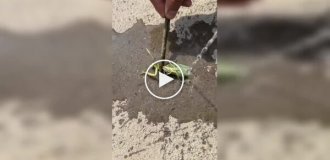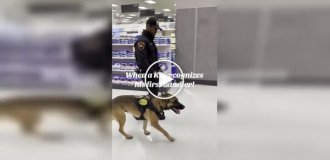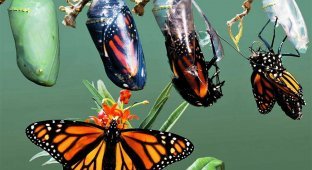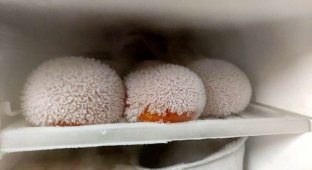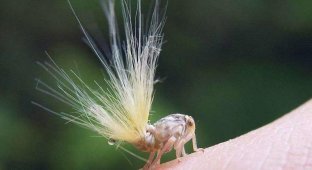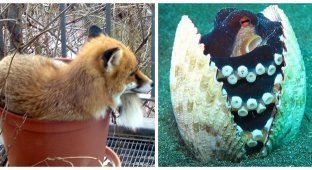The unthinkable from the field of microbiology: single-celled amoebas merge into a complex multicellular creature (11 photos)
At first glance, Dictyostelium discoideum may seem like a completely ordinary amoeba through the eyepiece of a microscope. But only at first. If you watch longer, you can almost see the birth of a new civilization! The creature does not want to be a pathetic primitive creature. It disdains evolutionary boundaries and turns from a microbe into a multicellular organism - and back! 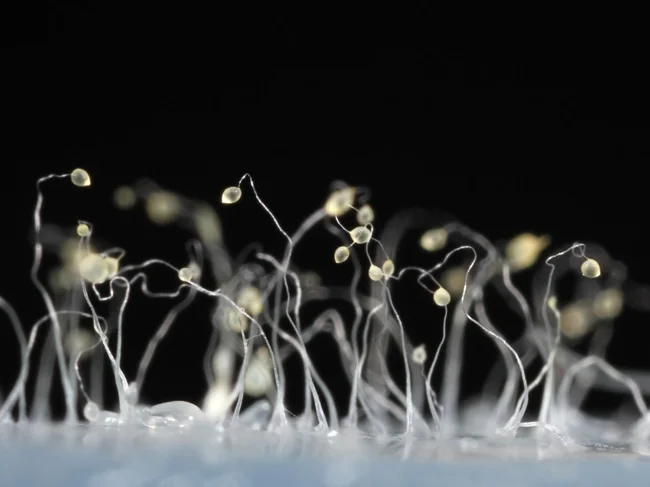
When you forgot about that very pot of soup that has been on the stove for two weeks.
The unification occurs in 4 stages, which we will talk about now. 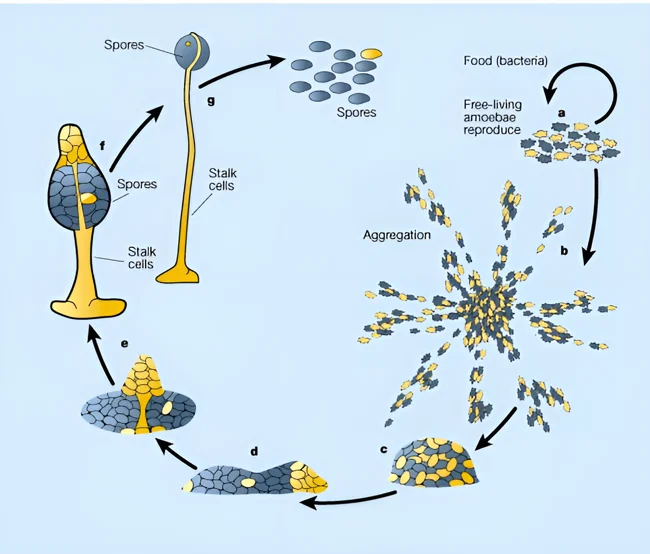
All stages of amoeba life, if you're too lazy to read.
Stage 1. Vegetative
A stage where absolutely nothing extraordinary happens. At this stage of life, the only way to distinguish discoideums from thousands of other types of amoeba is with a genetic test. Single-celled organisms simply crawl in a common heap on the ground or any other substrate, eat bacteria and reproduce. Isn't that the point of absolutely any form of life? And dictyosteliums don't bother either. At this stage, they reproduce by mitosis, that is, they clone themselves - simple, fast, effective. 
Fragment "A" shows individual amoebas. They are so small and nondescript that it is very difficult to find a photo of individual dictyos.
Stage 2. Aggregation
When other amoebas eat all the bacteria around them, they have two options. The first is to go into the form of a cyst. That is, to preserve themselves until a new food source appears. The second is to die. Because of their microscopic size, unicellular organisms cannot migrate to more suitable environmental conditions. But dictyosteliums have found a third way! Since they can't crawl away individually, they came up with the idea of uniting into a huge (by amoeba standards, of course) single organism! This gives them an excellent chance to move and capture new territory, but it's not that simple. In order for tens of thousands of individual cells to form something, the aggregation stage must take place. 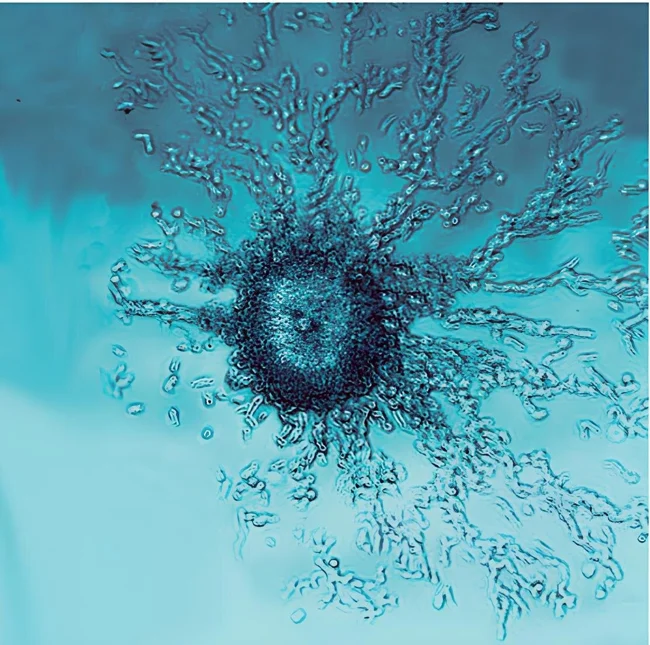
This is what cell migration to a common center looks like. Soon this indistinct lump will turn into a full-fledged single organism!
It occurs when the food within reach of the dictyosteliums runs out. Amoebas secrete two types of substances: some serve as a signal "everyone here!", and the second helps a bunch of cells stick together. This general bustle is called aggregation. A kind of center is formed where the largest concentration of single-celled organisms is. The logic is simple: the more amoebas, the more signals. That's where everyone crawls.
Stage 3. Migration
When all the dictyosteliums have gathered in an indistinct heap, they need to distribute roles. Someone will have to become the "organ of movement", that is, migrate to the outer wall of the resulting mass and begin to produce mucus, along which the rest will crawl. Others will become "cleaners", which will collect the waste products of all the cells of the colony and throw them out. 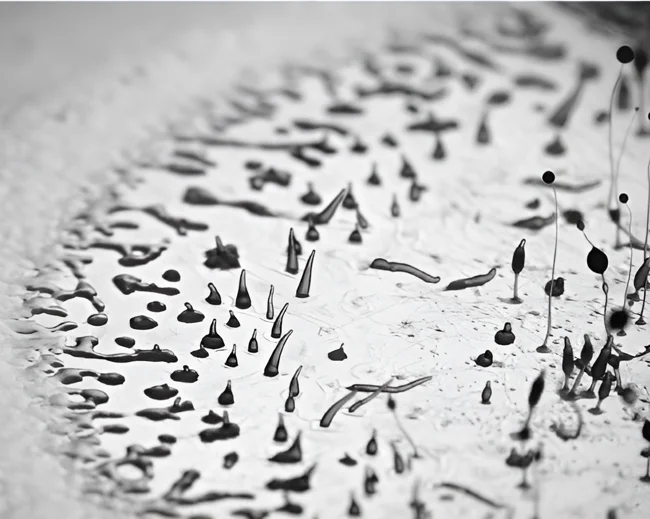
From simple to complex, clearly.
At the third stage, the gathering of microorganisms looks like a small, white-cloudy slug up to 4 millimeters long. Not much, but you can see it with the naked eye! One such slug can contain up to 100,000 amoebas, and they all work as a single organism. It's simply amazing! Here, 5-6 people in a team work haphazardly, and single-celled organisms without a brain or nervous system unite into a multi-thousand pile and everything is great! 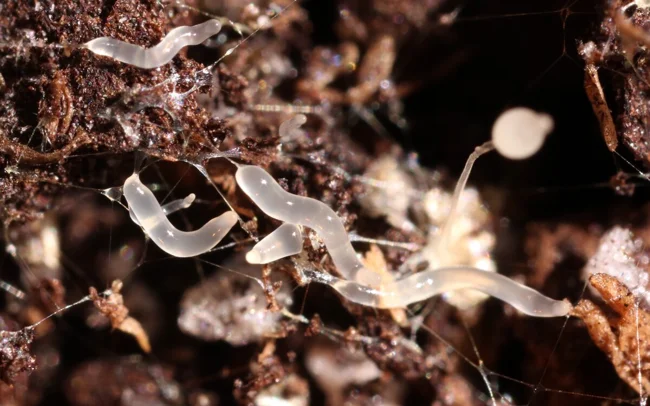
Hey, listen, who are you calling a snot? There are actually several thousand of us here!
The slug is looking for more or less favorable conditions. Its landmarks are light, temperature and air humidity. The colony itself will no longer feed, their task is to find a good place, give life to a bunch of new amoebas and die. 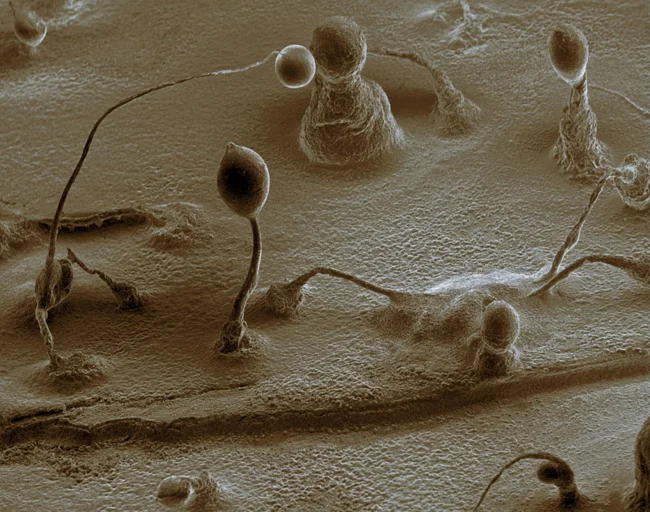
The head on a hair is the very last stage of the slug's life, and the pimples are just beginning to transform.
To increase the chance of successful colonization, dictyosteliums do not crawl alone, but with a "bag" of edible bacteria. Having found a suitable patch of land, amoebas drop bacteria in a new place so that they can begin to multiply. This is truly unique, because single-celled organisms are essentially engaged in real farming!
Stage 4. Culmination
Actually, this is why amoebas turned into biological constructors. When a slug crawls to a suitable place, the cells inside it once again hang out here and there, and the shapeless something turns into something like a mushroom on a leg. This leg is a bunch of suicide cells that sacrifice themselves for the sake of the cap. Because it is those comrades that end up on top that will give birth. The rest will die. 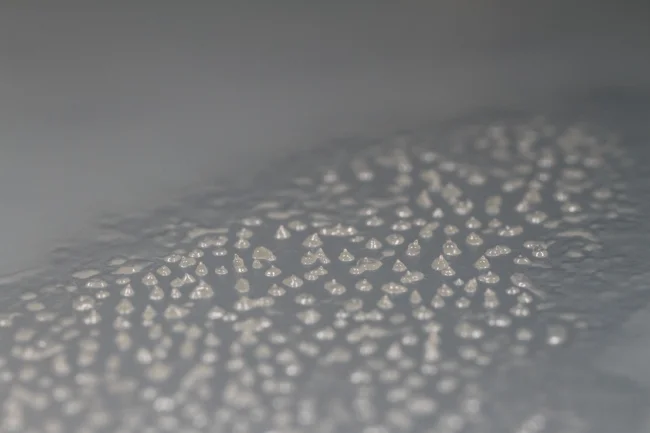
All stages of growth: from a transparent snot to a full-fledged mushroom. 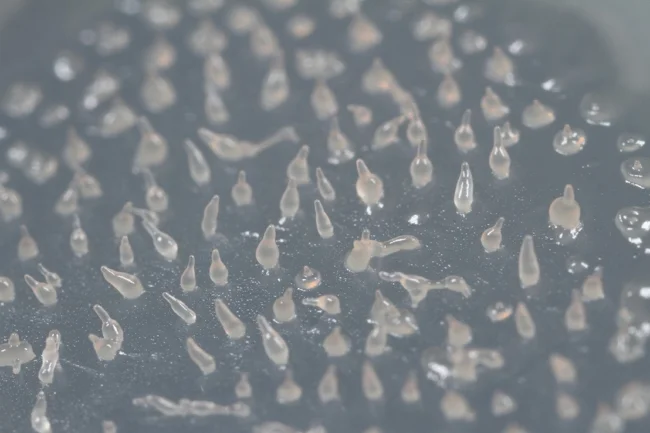
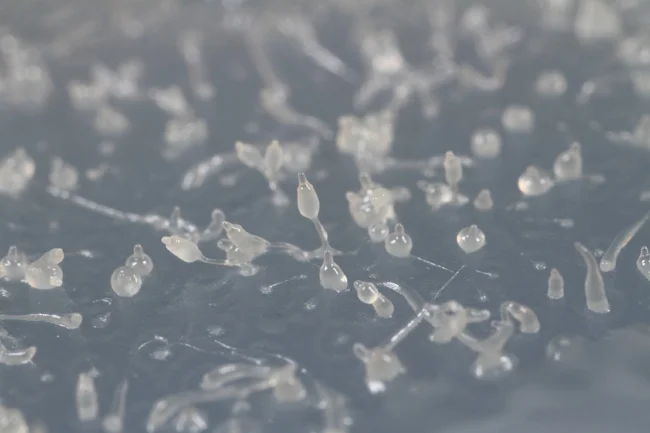
This stage lasts about 8 hours - consider one working day. It all ends with the dictyosteliums in the cap dividing many, many times and forming small spores - canned clones of themselves. After that, the slug-fungus dies, and the spores are scattered around the area, and everything starts all over again. 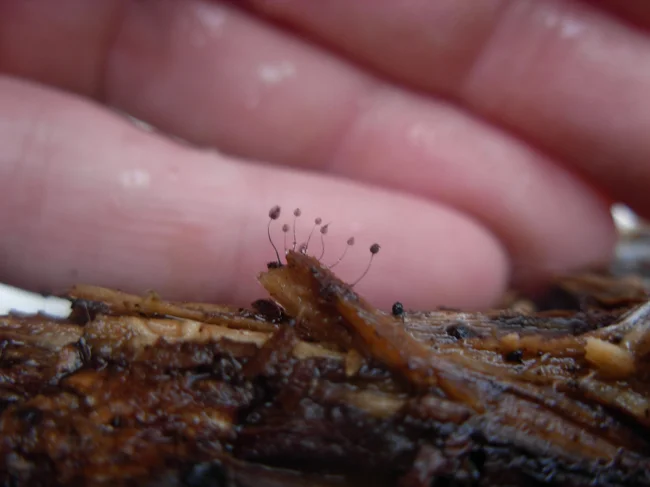
And this is what connected amoebas look like on a hand scale.
